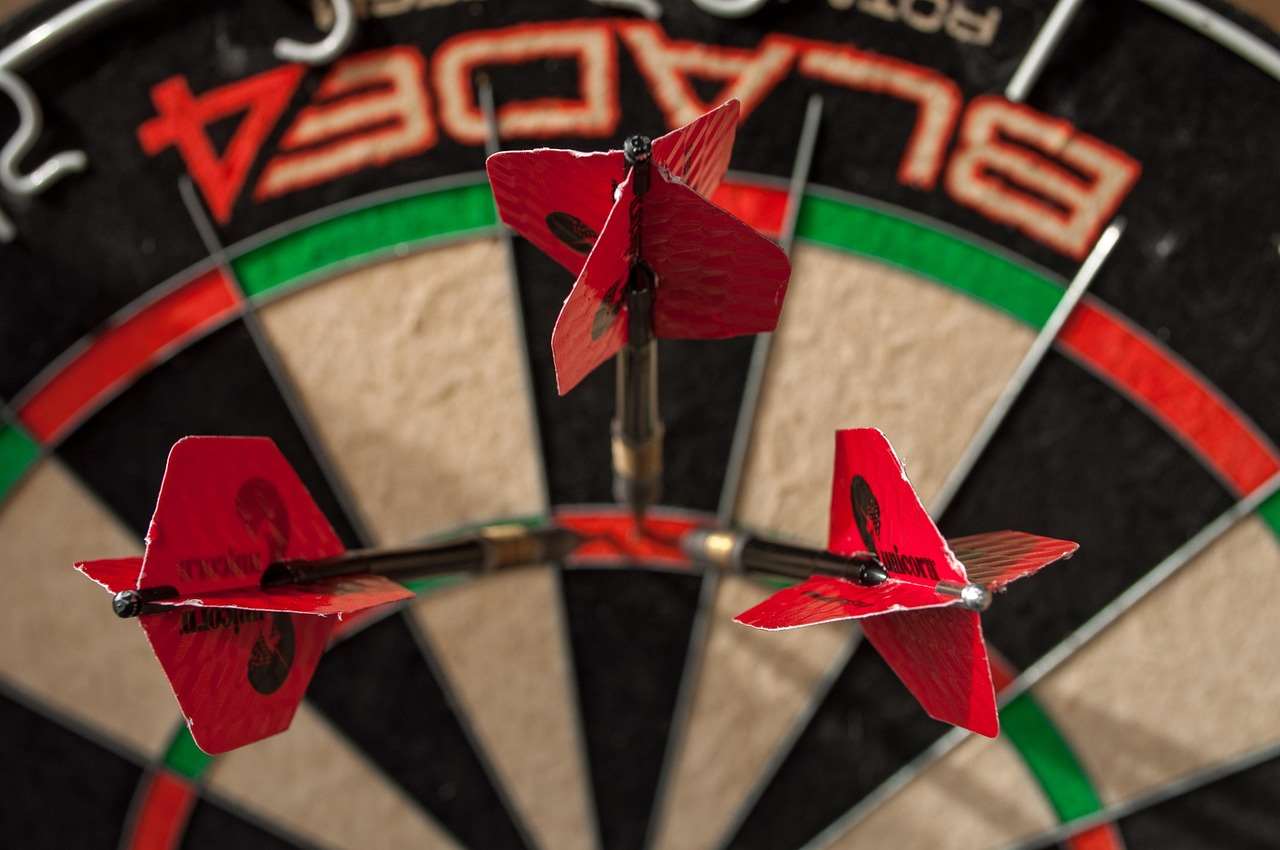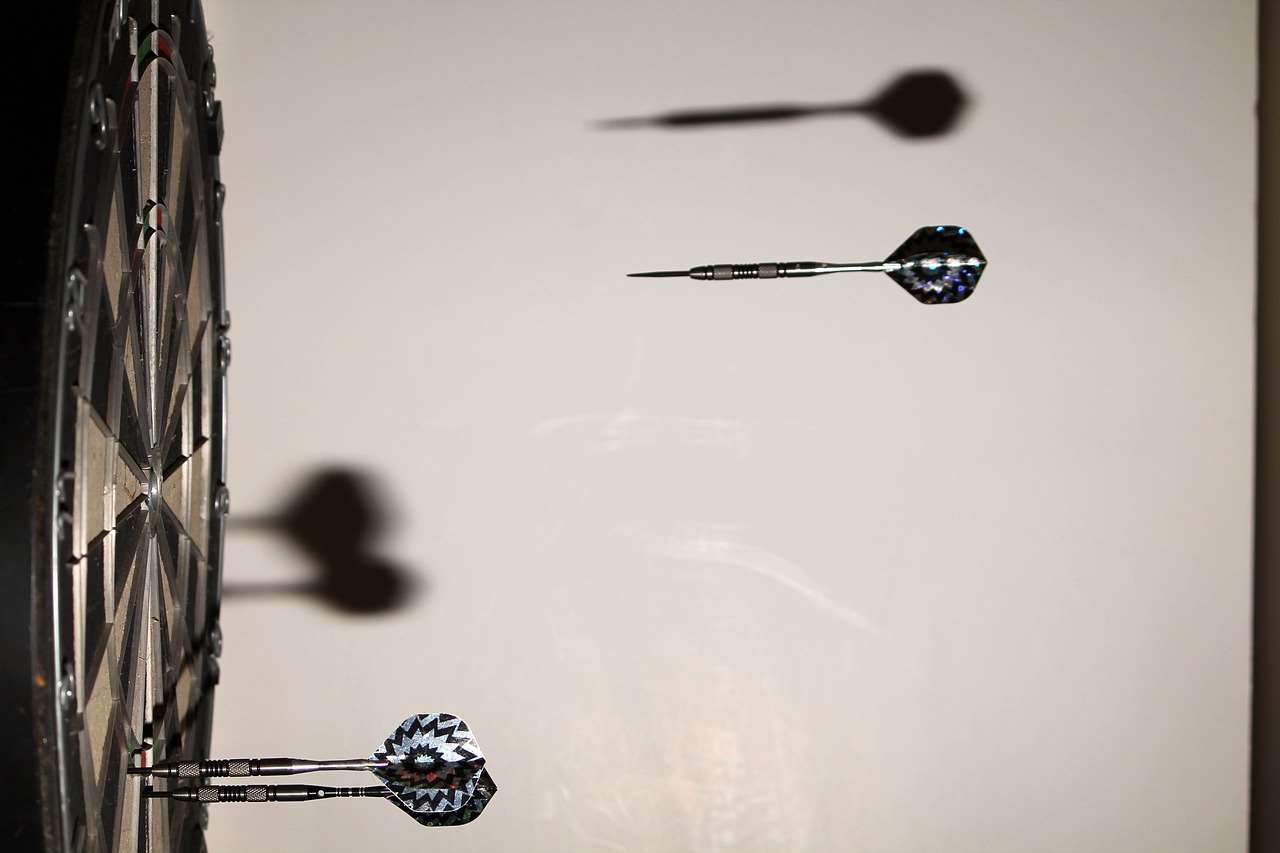The average number of 180s in a professional darts match can vary wildly, but a good benchmark might be around 3-5 per player. However, this is just an average; some matches see significantly more, while others see far fewer. This article will delve into the factors influencing the average 180s in a darts match, explore strategies for increasing your own 180 count, and discuss the impact of these high-scoring throws on the overall game.
⚠️ Still Using Pen & Paper (or a Chalkboard)?! ⚠️
Step into the future! The Dart Counter App handles all the scoring, suggests checkouts, and tracks your stats automatically. It's easier than you think!
Try the Smart Dart Counter App FREE!Ready for an upgrade? Click above!
Many factors influence the number of 180s seen in a match, from player skill to match tension. Understanding these nuances can greatly enhance your appreciation of the game.
Understanding the Average 180s in a Darts Match
While a precise figure for the average 180s in a darts match is elusive due to the variability between players and match formats, analyzing professional matches reveals trends. Top-tier players, known for their consistent accuracy and power, might average higher, while those at lower levels will naturally see fewer. Furthermore, the format of the match, including the number of legs and sets, impacts the overall opportunity for 180s. A longer match naturally provides more chances for high scores.

The mental aspect of the game plays a significant role. Pressure and tension in crucial moments can affect accuracy, potentially reducing the number of 180s thrown. Conversely, a confident player, relaxed and focused, might achieve more than expected.
Factors Influencing 180 Frequency
- Player Skill: Professional players regularly achieve multiple 180s in a single match, demonstrating their exceptional skill and practice. A beginner might only achieve one or none at all.
- Match Format: Longer matches obviously offer more opportunities to hit 180s. A best-of-five set match will naturally yield more opportunities compared to a shorter format.
- Mental Game: The pressure of a close match can negatively impact performance, reducing the likelihood of hitting 180s.
- Dart Equipment: The quality of darts, flights, and even the dartboard itself can subtly influence accuracy and, consequently, the frequency of 180s.
Strategies for Increasing Your 180s
While hitting a 180 consistently requires dedicated practice and natural talent, certain strategies can help improve your chances. Focus on consistent technique and aiming. Developing a reliable throwing motion is crucial for accurate shots. Consider practicing in different environments to get used to varying lighting conditions and surrounding noises. Regular practice with a high-quality dart board brand is essential. Don’t just throw for the 180; focus on hitting triples and doubles consistently; this solid foundation will naturally increase your 180 count.
Analyzing your throws and identifying recurring mistakes is another key factor. Even the slightest flaw in your technique can dramatically impact your accuracy. Regular video recording of your practice sessions allows you to review your throws and identify any errors. Consider using dart tracking apps to monitor your stats, focusing on identifying strengths and areas for improvement.

Remember, patience and persistence are key. Mastering the art of hitting 180s takes time and dedication. Don’t get discouraged by setbacks; learn from your mistakes and keep practicing.
The Impact of 180s on Match Dynamics
A well-timed 180 can dramatically shift the momentum of a match. In a close game, a burst of high scoring can demoralize the opponent and energize the player achieving the 180. This psychological impact is significant. However, relying solely on 180s to win isn’t a winning strategy. A balanced approach focusing on overall accuracy and consistent scoring remains crucial.
Moreover, consider the broader impact on darts scoring strategy. A 180, followed by a high checkout, can quickly seal a leg, placing significant pressure on the opponent. The thrill of a high score increases the intensity and excitement of the game for both the players and the audience.
Analyzing Professional Matches
Watching professional darts matches offers invaluable insights. Analyze how top players approach scoring, the consistency of their throws, and how they manage pressure situations. Pay attention to their body language and focus; these small details can reveal a lot about their mental game. Observing how they react to scoring runs and setbacks can help you learn to handle your own emotional responses during play. Watching how they use an Electronic dart score counter could help your understanding of the strategic approach to the game as well.

Beyond the skill of throwing, understanding darts score keeping is paramount. Efficiently tracking scores allows players to make strategic decisions during the match. This is as vital as throwing well.
The Role of Practice and Mental Fortitude
The quest for consistent 180s is a journey demanding dedication and unwavering practice. Regular sessions focused on accuracy and consistency are essential. Develop a routine, paying attention to your stance, grip, throw, and follow-through. Record your practice sessions to analyze your technique and identify areas for improvement. As your skill improves, incorporate more challenging exercises, gradually increasing the difficulty to push your limits.
Beyond physical practice, mental fortitude plays a crucial role. Learn to manage pressure, maintain focus, and control your emotional responses during the match. Visualization techniques can be extremely effective. Practice visualizing yourself hitting perfect scores, improving your confidence and focus. Meditation and mindfulness exercises can also improve concentration and reduce stress.

It’s also beneficial to understand your opponent’s strengths and weaknesses. Analyzing their scoring patterns and styles can inform your own strategic decisions during a match. Adaptability in your game is crucial, especially when facing skilled players with diverse approaches. Analyzing your own matches is as important, recognizing patterns in your performance, both strengths and areas for improvement.
Beyond the 180: A Holistic Approach to Darts
While the average 180s in a darts match is a fascinating metric, it’s crucial to remember that it’s just one element of the game. Consistent accuracy across the board, precise doubles, and a well-defined finishing strategy are equally important. A player with a consistently high average may still lose if they lack the ability to close out legs effectively. This emphasises that a holistic approach is critical for success.
Consider exploring different darts flight all in one options to further fine-tune your throws and find the combination best suited to your style. Experiment with different dart weights and materials, as these factors can influence your throwing technique. Investing in quality equipment enhances the game experience and contributes to performance improvements.

Furthermore, staying up-to-date with the latest techniques and strategies is vital. Follow professional tournaments, analyze top players’ performances, and learn from their successes and failures. This consistent engagement with the game fosters continuous improvement. The dynamic nature of darts means that ongoing learning and refinement of techniques are crucial for success. Whether you’re aiming to improve the average 180s in a darts match or simply seeking enjoyment, this continuous learning process is key.
Finally, remember that darts is a social game. Embrace the camaraderie and sportsmanship that define the community. Whether you’re playing casually or aiming for professional levels, remember to have fun and make the most of the experience. Regular participation helps refine techniques, build confidence, and hone your overall game.
Conclusion
Understanding the average 180s in a darts match provides valuable insight into the game’s dynamics and player skill levels. While a precise average is difficult to pin down, it’s clear that a combination of skill, practice, mental fortitude, and effective strategy significantly influences the frequency of 180s. By focusing on these elements, players of all levels can improve their performance and potentially achieve more high-scoring throws. So grab your darts, practice diligently, and enjoy the thrill of the game!
Hi, I’m Dieter, and I created Dartcounter (Dartcounterapp.com). My motivation wasn’t being a darts expert – quite the opposite! When I first started playing, I loved the game but found keeping accurate scores and tracking stats difficult and distracting.
I figured I couldn’t be the only one struggling with this. So, I decided to build a solution: an easy-to-use application that everyone, no matter their experience level, could use to manage scoring effortlessly.
My goal for Dartcounter was simple: let the app handle the numbers – the scoring, the averages, the stats, even checkout suggestions – so players could focus purely on their throw and enjoying the game. It began as a way to solve my own beginner’s problem, and I’m thrilled it has grown into a helpful tool for the wider darts community.